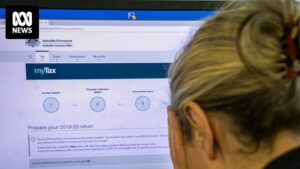In an era where technology is reshaping the landscape of health research, a novel approach known as data donation is emerging as a promising method to measure physical activity (PA) among older adults. This method, which allows individuals to voluntarily share their personal data from health apps and devices, is gaining traction as a more accurate and less burdensome alternative to traditional survey methods.
The initiative comes as researchers seek to address the challenges associated with measuring PA in aging populations, where accurate data is crucial for developing health interventions. Traditional methods, such as self-reported surveys, often suffer from inaccuracies due to social desirability bias and recall errors. In contrast, data donation leverages the widespread use of smartphones and health apps, providing a more objective measure of PA.
Traditional Methods and Their Limitations
Historically, researchers have relied on self-reported surveys to gauge physical activity levels. Instruments like the International Physical Activity Questionnaire have been standard tools in large population studies. However, these methods are prone to errors, as participants may misreport their activity levels due to forgetfulness or social desirability.
To mitigate these issues, some studies have employed diary methods, where participants document their activities in detail. While this approach can yield more accurate data, it often leads to participant fatigue and low response rates. The advent of wearable technology has introduced sensor-based measurements, offering continuous and precise tracking of physical activity. Yet, these devices can be costly and may lead to noncompliance, especially among older adults unfamiliar with such technology.
Data Donation: A New Frontier
Data donation presents a user-centered approach to data collection, capitalizing on recent legislative changes like the European Union’s General Data Protection Regulation. These laws empower individuals to access and share their personal data, making data donation a feasible option for research.
This method involves participants retrieving their data from health apps and donating it for research purposes. It circumvents the restrictive access to data that platforms often impose, allowing for a broader and more inclusive sample. Importantly, data donation gives participants control over what data they share, addressing ethical concerns associated with passive data collection.
“Data donation offers a more ethical way of collecting personal digital data, giving participants control over their information,” said a leading researcher in the field.
Participation Rates and Predictors
Recent studies have explored the willingness of older adults to donate their PA data. Findings indicate that while many express initial willingness, fewer follow through with the donation process. For instance, a study involving Dutch smartphone and fitness tracker owners revealed varying willingness to upload data, ranging from 33% to 49%.
Factors influencing participation include sociodemographic characteristics, privacy concerns, and trust in research organizations. Age, education, and income levels significantly affect the likelihood of data donation, with younger and more educated individuals more inclined to participate.
Addressing Bias and Enhancing Participation
One of the challenges with data donation is the potential for bias due to selective participation. Studies have shown that those who donate data tend to be healthier and more tech-savvy, which may skew results. To address this, researchers are exploring strategies to make the donation process more accessible and appealing to diverse populations.
Providing clear instructions and visual examples of the data to be donated can enhance understanding and trust. However, researchers must balance this with privacy concerns, as some participants may be deterred by the visibility of their data.
Implications for Future Research
The adoption of data donation for PA measurement holds significant implications for health research and policy. By providing a more accurate and comprehensive picture of physical activity, this method can inform targeted interventions and public health strategies.
Moreover, understanding PA patterns in older adults can help address health disparities and improve quality of life. As technology continues to evolve, data donation may become a vital tool in the arsenal of researchers seeking to enhance the accuracy and efficiency of health data collection.
“Data donation not only offers a feasible approach for collecting large volumes of relevant behavioral data but also represents a step forward in ethical research practices,” experts assert.
As the field progresses, further studies are needed to refine data donation methods and explore their potential to complement traditional self-report measures. By integrating multiple data sources, researchers can achieve a more holistic understanding of physical activity and its impact on health outcomes.






